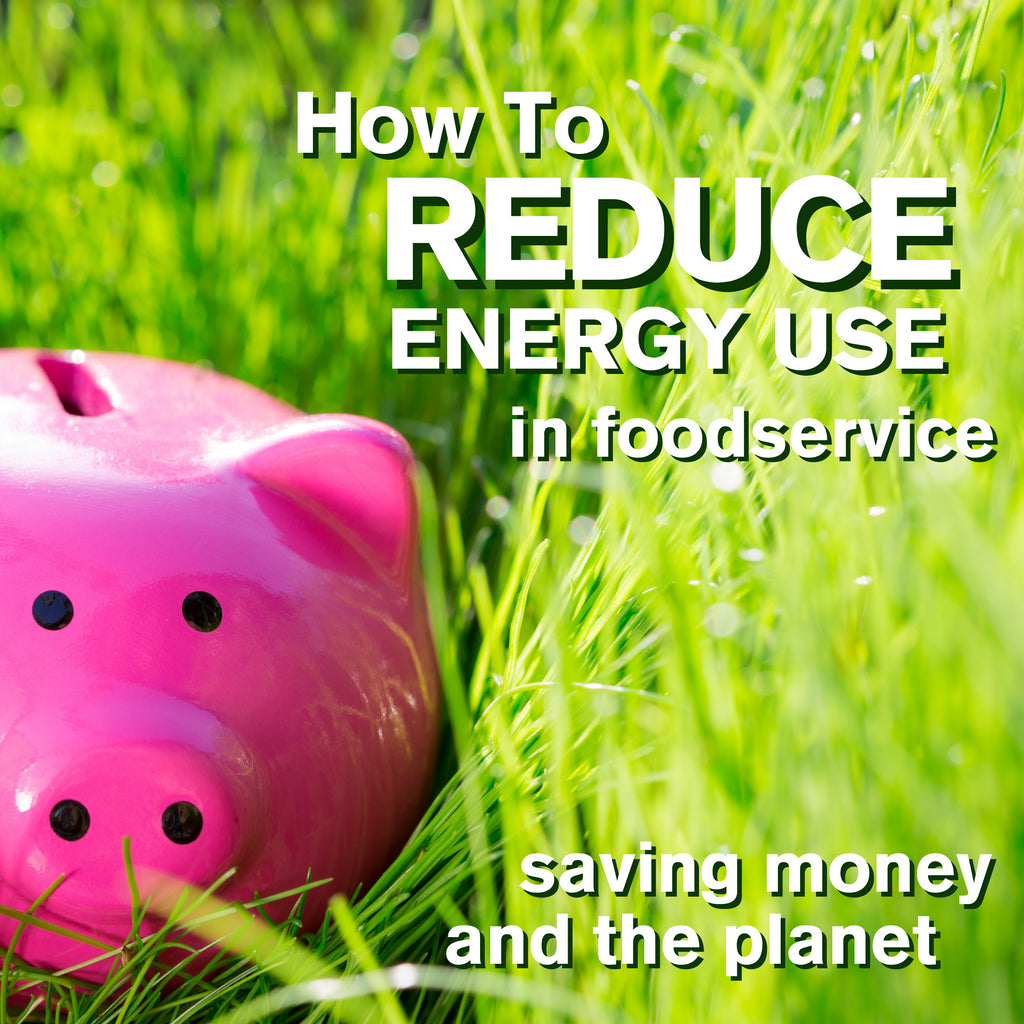How to Reduce Energy Use in Foodservice
Posted by CHERIE THOMPSON

Want to reduce energy consumption to benefit the environment and increase your bottom line?
The commitment to strive for better sustainability in foodservice is a big first step. Regardless of whether the motivation for the shift is social or financial (or hopefully both) the entire operation from front to back of house must take on the responsibility to make the difference between success and failure.
According to Energy Star, foodservice ranks among the top energy-intensive industries. The average commercial building wastes 30 percent of the energy it consumes. That means, chances are, you’ll find some easy opportunities to save money and improve energy efficiency without sacrificing quality or service.
To measure your progress in reducing energy usage, you need to know your starting point:
Look at your utility bills during the past year and note when consumption was highest and lowest. Yes, look at all of them – electricity, gas and water.
Contact your utility companies directly to find out if they offer free or low-cost energy audits.
1. Choose high-efficiency equipment
High-efficiency appliances are designed to spend the minimum amount of energy for maximum performance. When looking to upgrade or replace equipment, put energy efficiency at the top of the list.
Every new equipment purchase comes with two costs to consider, the initial price and the cost of operation. If the energy-efficient appliance is slightly pricier, factor in the money saved over time. To further offset the higher cost, rebates are frequently offered to encourage the purchase of more energy-efficient options. Look for Energy Star certified equipment, as well as Energy Star rebates and incentives for Canadian businesses.

2. Equipment maintenance
New restaurant equipment not in the budget? Regular maintenance and repairs can go a long way.
Measure the temperatures of your ovens and refrigerators to make sure they are performing optimally. A fridge running a degree or two colder than necessary may be using as much as 25% more electricity than it needs to.
Check and replace the seals on refrigerators.
Clean ovens, refrigerator coils, and range hoods regularly to improve performance.
Change and clean filters regularly (furnace, fryers, microwaves, ice machines, etc.).
Allow proper spacing for airflow around equipment for maximum efficiency.
Regular maintenance schedule for the HVAC system.
3. Lighting
Seeing is believing and with a few quick changes, you will see the change on your electricity bills.
Make the switch to LED lighting; these light bulbs not only use less energy but also have a longer lifespan and give off significantly less heat.
Install motion sensors in less frequently used areas.
Illuminate walkways and patios with solar-powered outdoor lights that require little maintenance and can last up to 10 years.
Dust and degrease the bulbs and lampshades to optimize lighting output.
Smart lights allow you to turn lights on and off with a smart device. They also have options for timers and dimmers. Check out lighting retrofit programs for further incentives.

4. Heating and cooling
Keep your guests and staff comfortable with the right plan.
Program your thermostat to reduce energy consumption during off-hours.
Utilize ceiling fans to assist with air flow during hot and cold months.
Located in a cooler climate? Ensure proper insulation in common areas of heat loss, like around electrical receptacles/outlets, and window frames, and add weatherstripping to doors.
Air conditioners also work more efficiently when the building is properly insulated.
Using only cold water in food service isn't feasible. Water heating can be a significant amount of restaurant energy use. Set water temperature lower and use a booster instead, insulate hot water pipes and adjusting recirculation pump timer.

5. Water conservation
Every drop counts so save every drop.
Repair leaks as quickly as possible. Small leaks can add up to large losses in commercial kitchens.
Plan ahead and thaw frozen items in the fridge rather than under cool running water.
Install low flow taps and toilets in restrooms.
Serve water to guests by request.
Use low-flow pre-rinse spray nozzles
Only run full loads through the dishwasher.
Use dry cleaning methods such as dry shampoo for carpets rather than steam-cleaning.

6. Staff training
Staff are a great resource for suggestions on energy-saving tips. When training new staff, make a point to include best practices and procedures like not leaving the cooler doors open, turning lights off in unused areas, only running full loads of laundry and turning off unused equipment.
It is important to create a culture of energy efficiency within the organization. Draw in all levels of staff and encourage collaboration and evolution of the efforts. With your whole team on board, your business will be on the track to energy efficiency in no time. The earth and your bank account thank you in advance.
Written by Bre Baker

